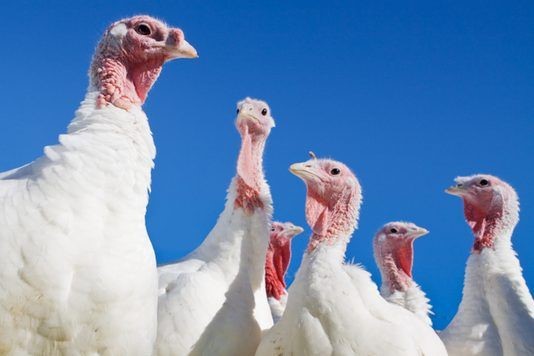
If you can't decide what type of bird to have sitting resplendent on your dining table this Christmas day, why not go for a multi-bird roast?
In medieval times putting birds inside other birds in order of size and majesty was a popular piece of culinary showmanship. Today's multi-bird roasts are often smaller versions of these, aimed at the lord of the suburban semi rather than the banqueting hall. Hugh Fearnley-Whittingstall successfully made a 10 bird roast during the River Cottage Christmas Special in 2004 for a medieval-themed feast, which rather kick-started our interest in them again.
Pecking order
Perhaps the best thing about a three bird roast is that everyone can get a bit of something different, those with traditional tastes can still have their turkey, whilst those wanting something a bit more adventurous can sample other fowls.
A cinch to carve
Carving, like carpentry, is a skill. Sadly, it is a skill that we seem to be practicing less and less these days. Consequently come the High Days and holidays someone ends up hacking at the poor bird, and the result is misshapen bits rather than smooth thin slices. With many multi-bird roast this isn’t a problem. There are two methods of production, the ‘Russian doll method’ where one boned-out bird is placed inside another, and the ‘layer’ method, where the meat (normally the breast meat) of different species are built up in concentric layers inside the final bird. This later method is becoming more popular as it gives a solid body of meat that when cooked and sliced resembles a terrine.
Where to get them
Our friends at Westin Gourmet offer a variety of three bird roasts, one featuring goose, chicken and pheasant, while another has duck, turkey and guinea fowl. Finally, a third contains turkey, duck and pheasant.
In 2007 Anne Petch at Heal Farm developed a twelve bird roast. Anne's monster twelve birder fed around 125 diners, took eight hours to cook, came in its own roasting tray and hamper. You did however, need a catering-sized oven to cook it in. Today she offers more modest three and five bird options in case your Christmas dinner guests don’t run to the hundreds.
The Ultimate multi-bird roast?
Of course there’s always someone who goes too far. And bon viveur Norman Douglas gives us a recipe for roti sans pareil or 'roast without equal' in his Venus in the Kitchen (1952). The recipe calls for an olive at the heart of a succession of boned-out birds, all placed one inside the other. First the olive goes inside a garden warbler, that goes inside an ortolan (A type of finch and already the victim of one of gastronomy’s more sadistic preparations), that goes in a lark, that goes in a thrush, that goes in a fat quail. The quail is then put in a lapwing, the lapwing in a golden plover, and the plover in a fat red-legged partridge. This, we’re told, then fits inside a well-hung woodcock, the woodcock goes inside a teal, the teal inside a guinea fowl; the fowl then goes in a pheasant, the pheasant in a wild goose, the goose in turkey and finally the turkey somehow fits inside the largest bird native to these islands and now protected, namely the bustard bird. After cooking and eating this you can quite rightly expect a visit from the RSPB.
More birds
Phil Vickery's one pot turkey pilau